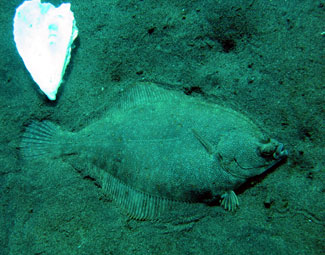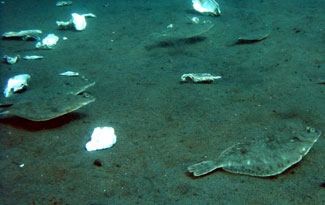

FBE Focal Species - Rock Sole

Two species of rock sole in Alaska were distinguished in 2000, the northern and southern rock soles (Lepidopsetta polyxystra and L. bilineata). Adults of the northern rock sole are found from Puget Sound through the Bering Sea and Aleutian Islands to the Kuril Islands, while the southern rock sole is known from the southeast Bering Sea to Baja California. Their distributions overlap from the far eastern Aleutian Islands and extreme south-eastern Bering Sea to Puget Sound. The northern rock sole spawns in midwinter and spring, and the southern rock sole spawns in summer. Rock soles mature and ovulate all ova simultaneously within both ovaries, and spawn in a single event. The rock soles, along with other small flatfishes, represent an important trawl fishery in the Bering Sea and Gulf of Alaska. The Fisheries Behavioral Ecology Program primarily works with the northern rock sole.

Rock soles grow to approximately 60 cm and can live in excess of 20 years. In the Gulf of Alaska, the northern rock sole reaches 50% maturity at 328 mm total length at an average of 7 years. In the Gulf of Alaska, the southern rock sole reaches 50% maturity at 347 mm total length at an average of 9 years. Adhesive eggs are laid on the bottom and hatch in 6-25 days, depending upon temperature. The larvae develop in the upper water column consuming small zooplankton. Metamorphosis occurs at about 15 mm, and small juveniles can be very abundant in shallow, near-shore waters where they consume polychaetes and small crustaceans. Age-0 northern rock sole is the most abundant flatfish in fine-mesh trawl collections in waters off Kodiak Island (1-30 m depth), sometimes reaching densities of several per square meter. The rock soles are highly cryptic in coloration and movement, and continue to eat small invertebrates throughout their lives in the benthos.
Focal Species Links:
Last updated
5 February, 2008
FBE Webmaster
|